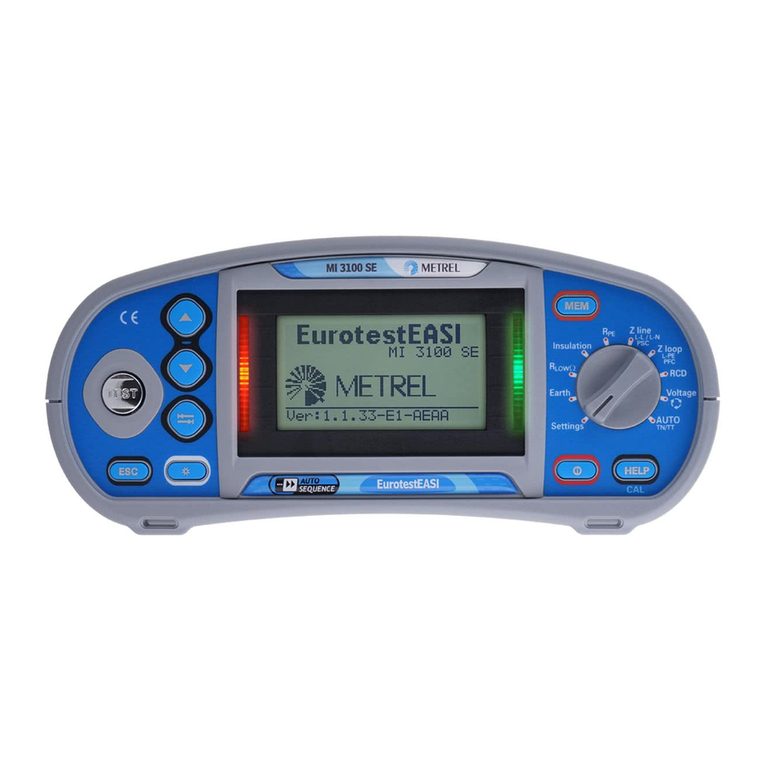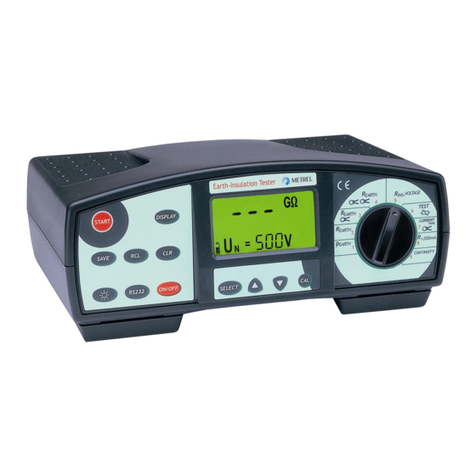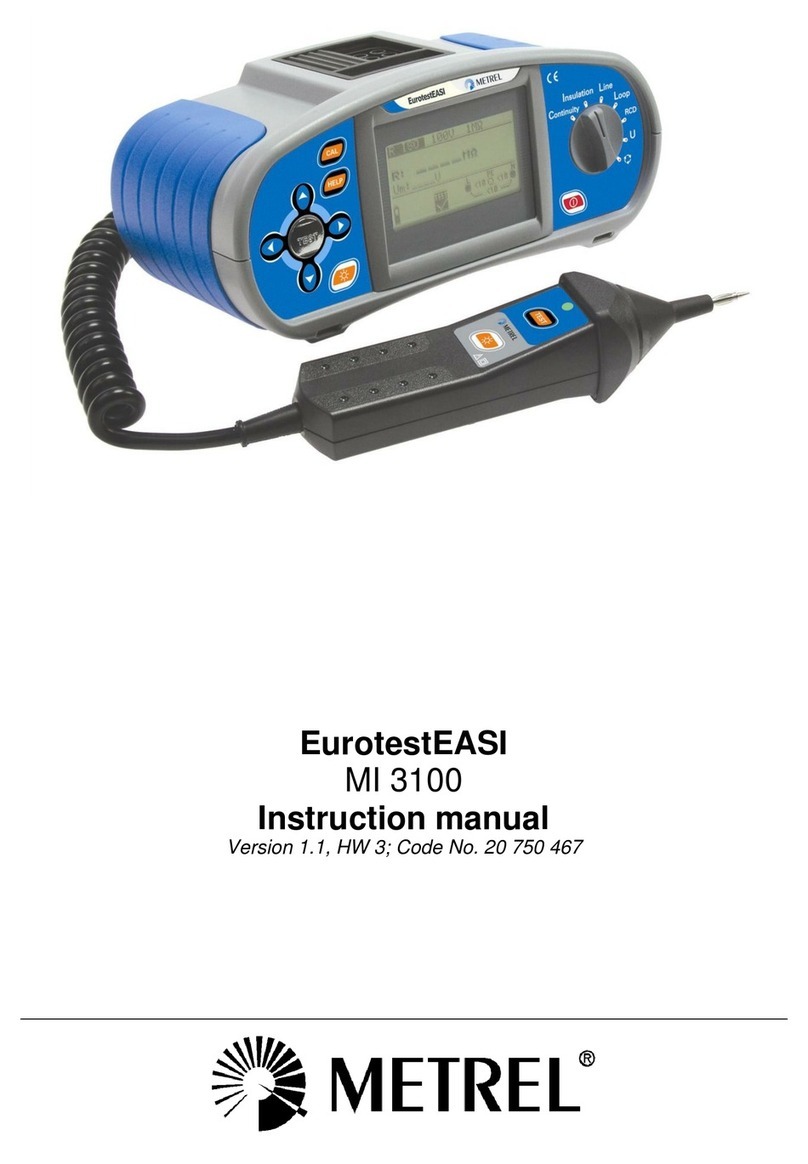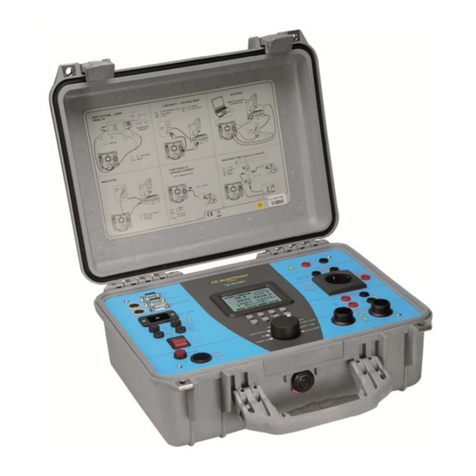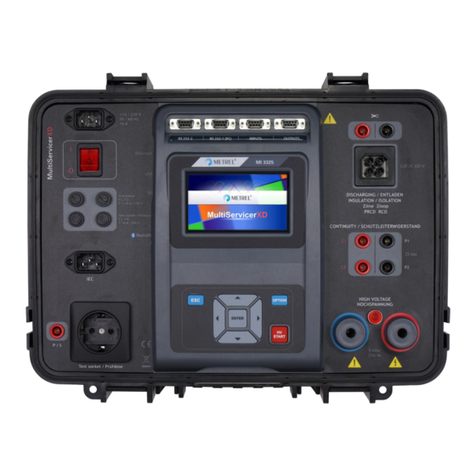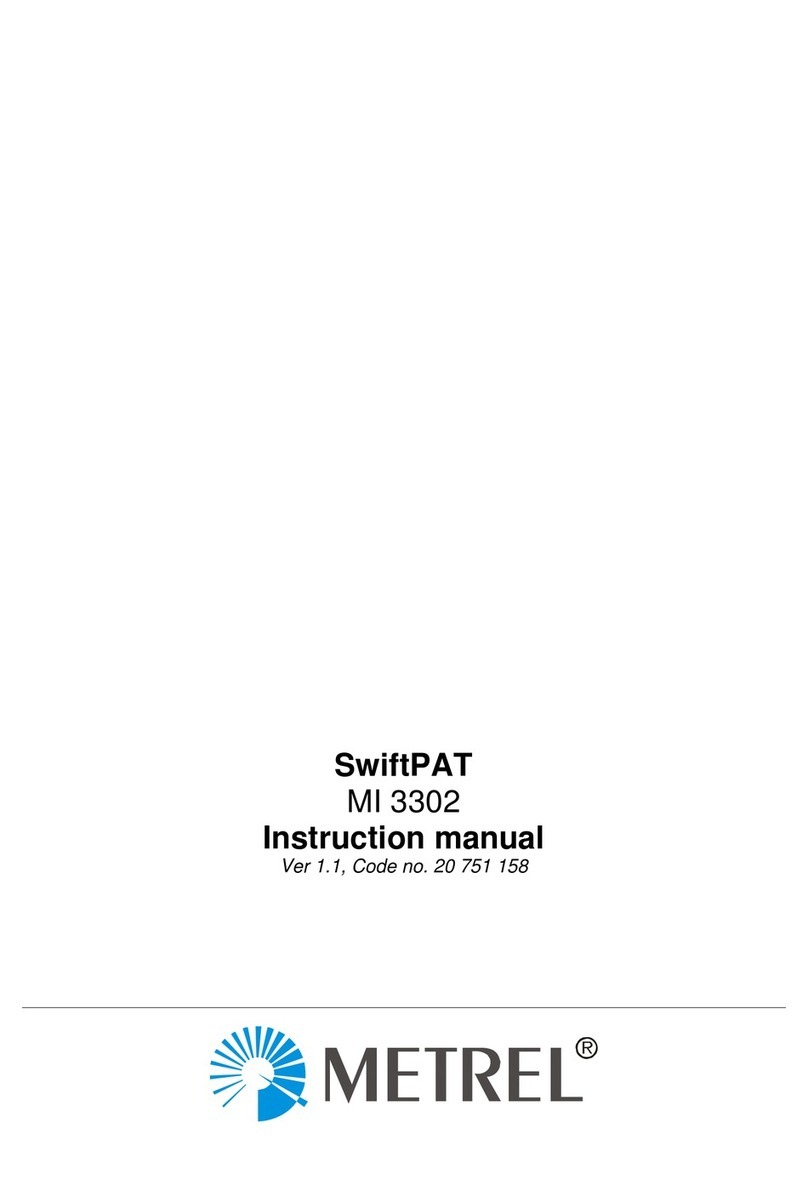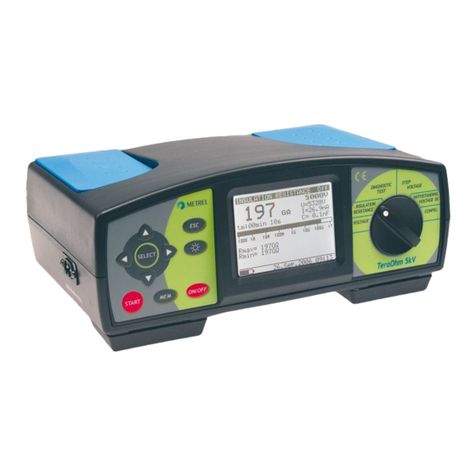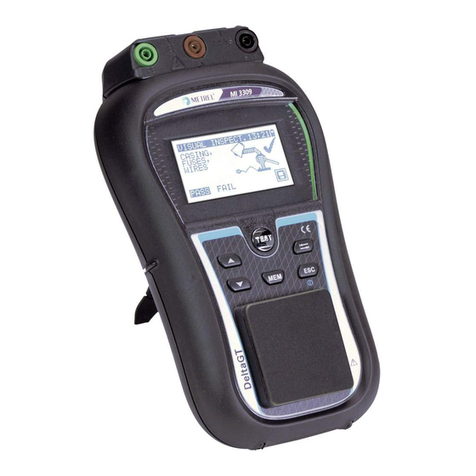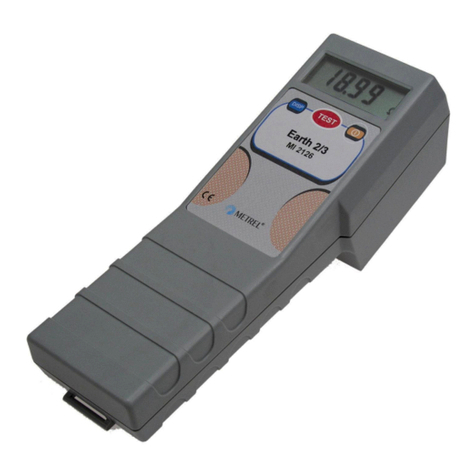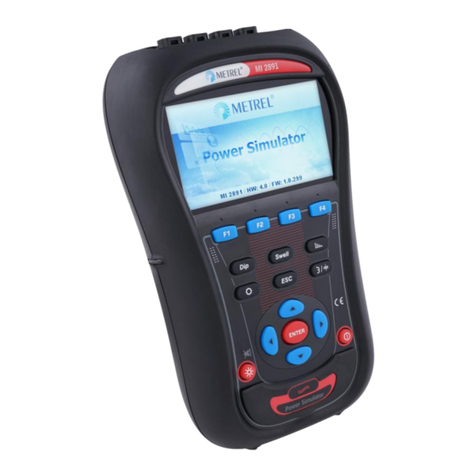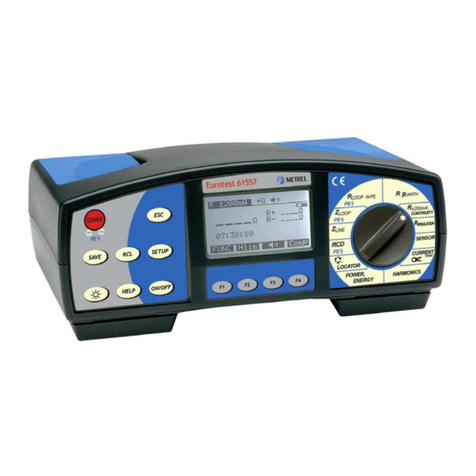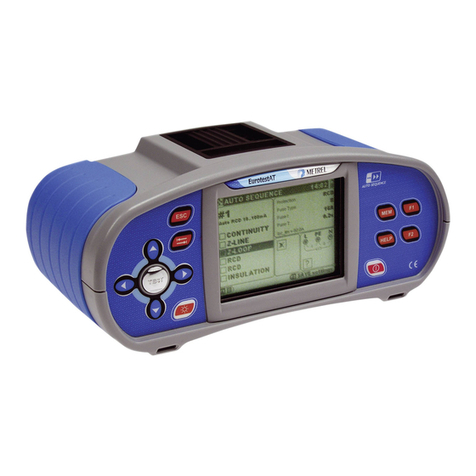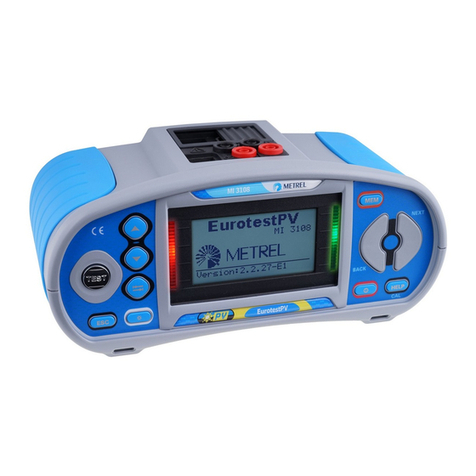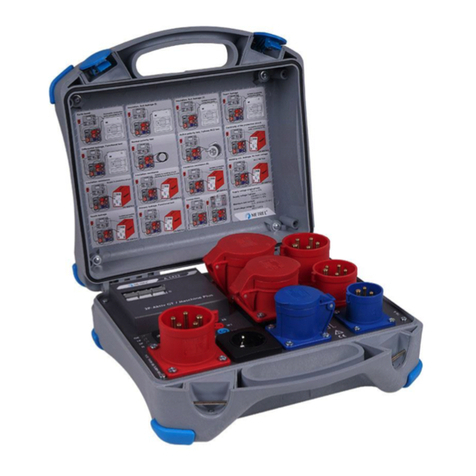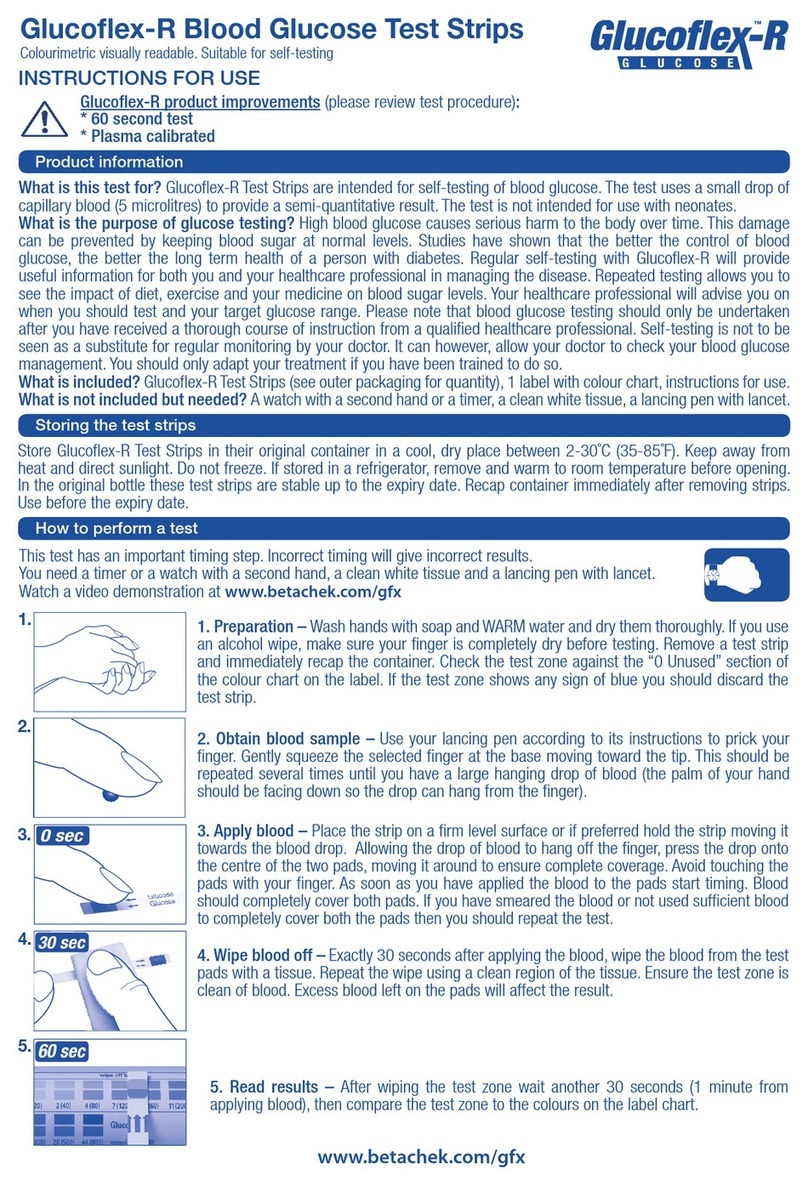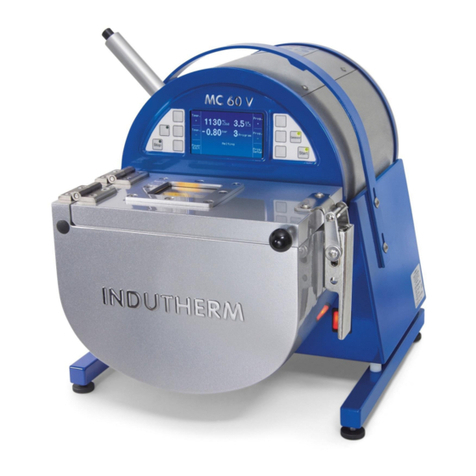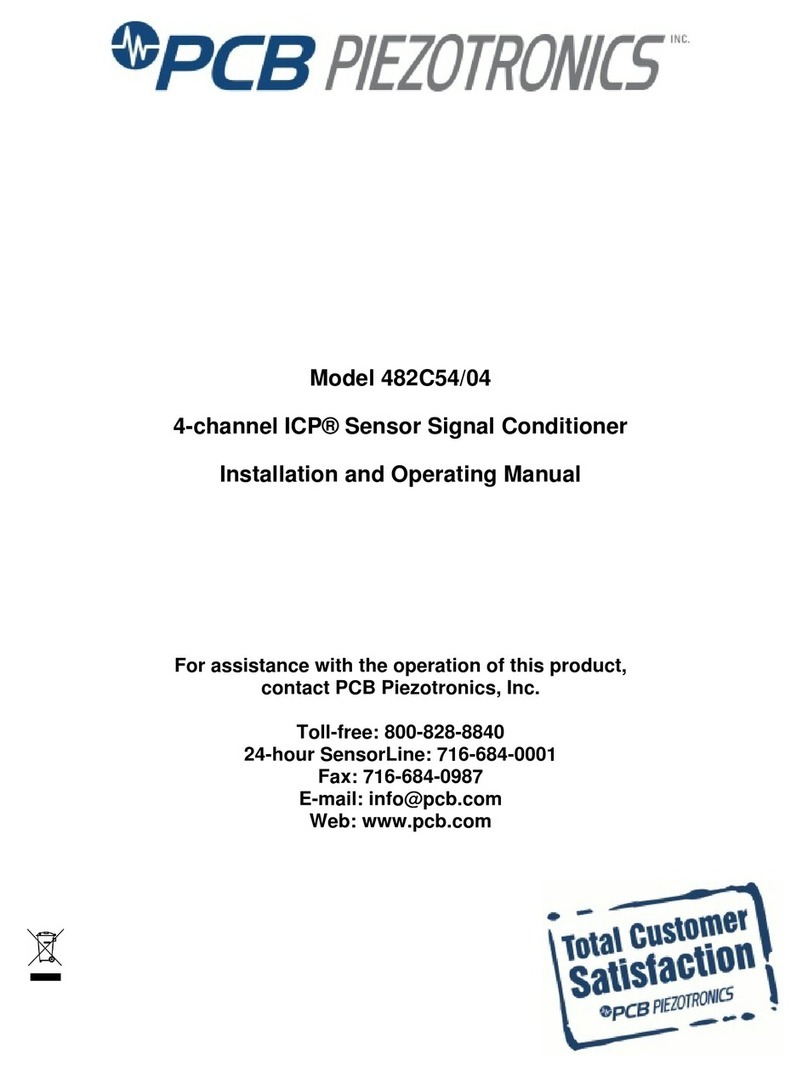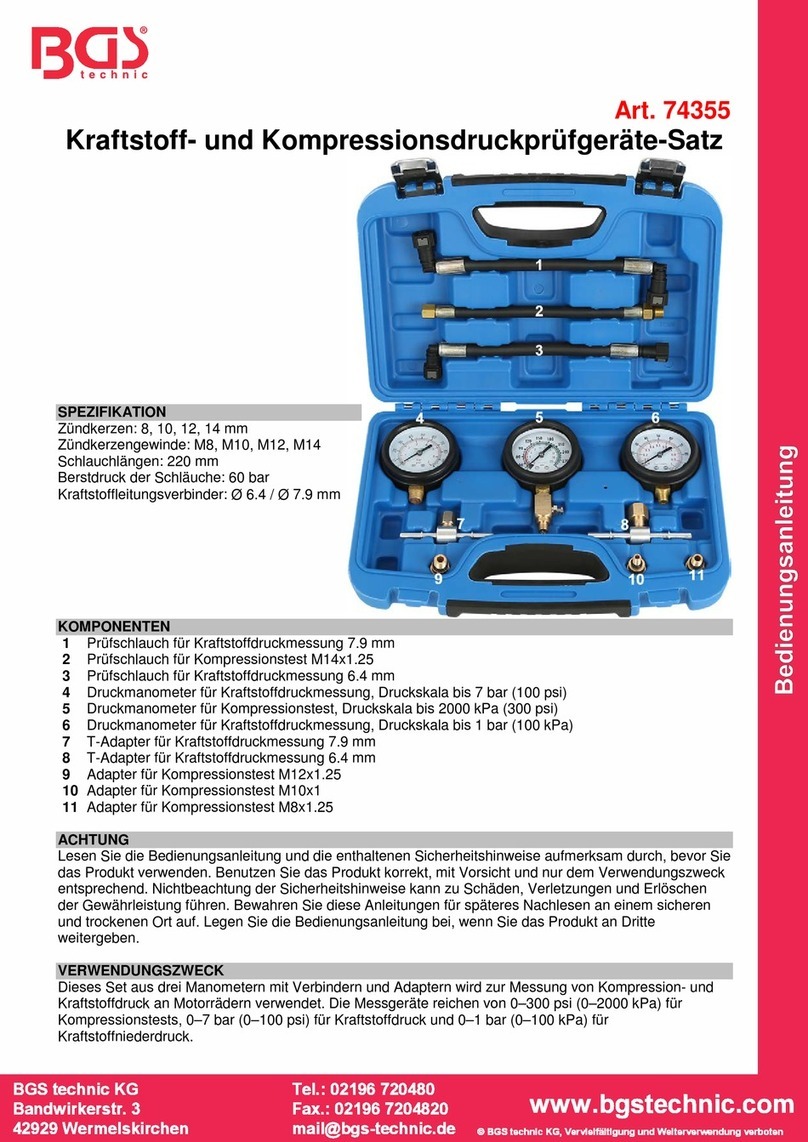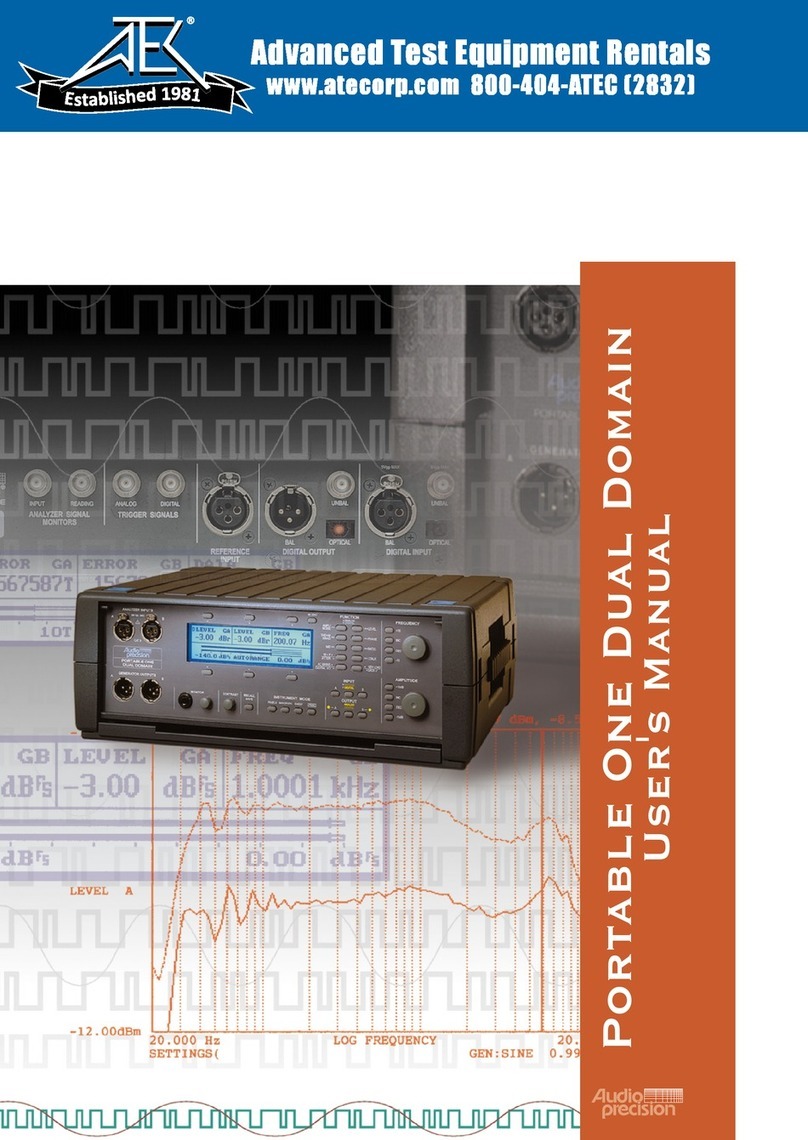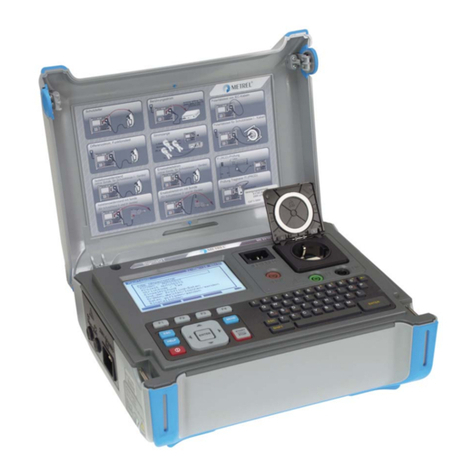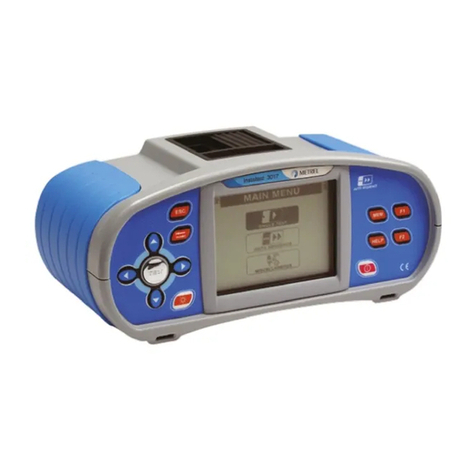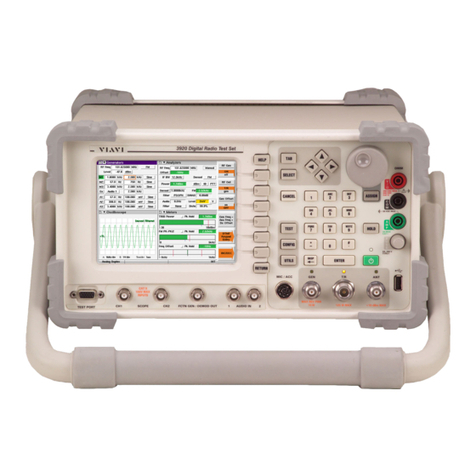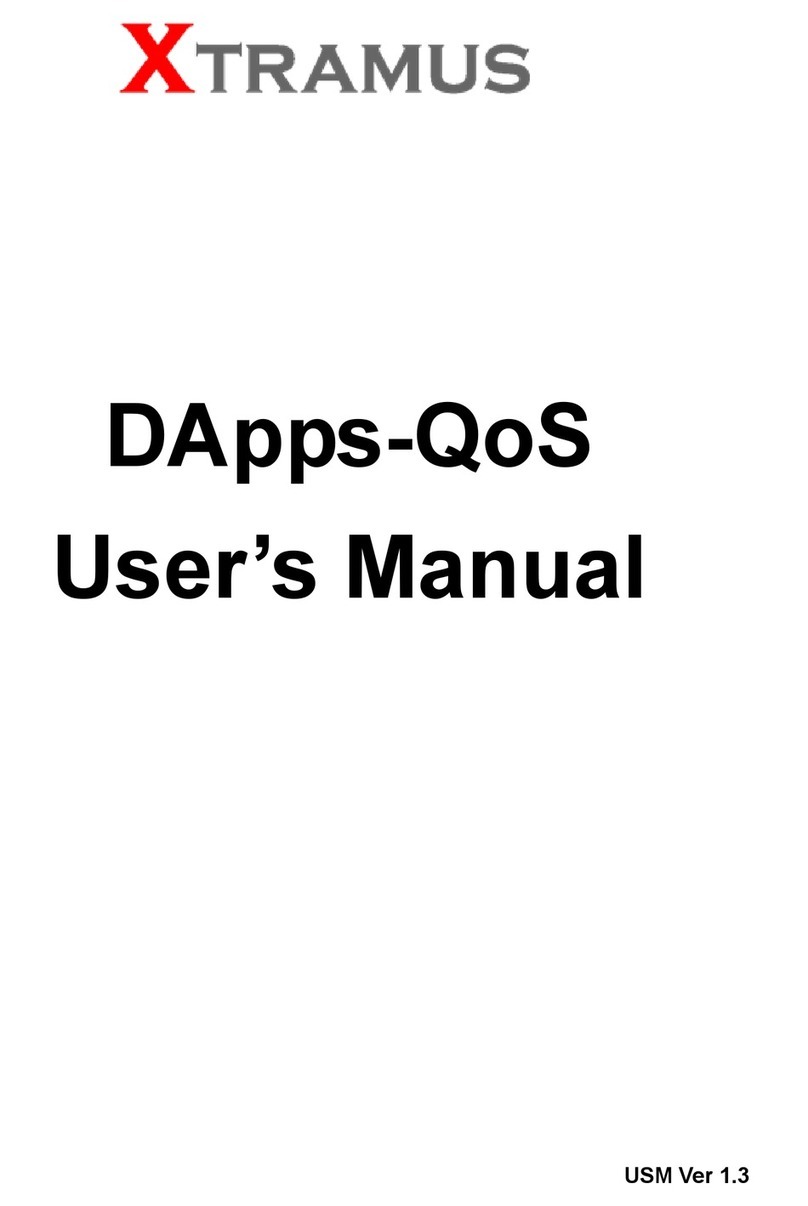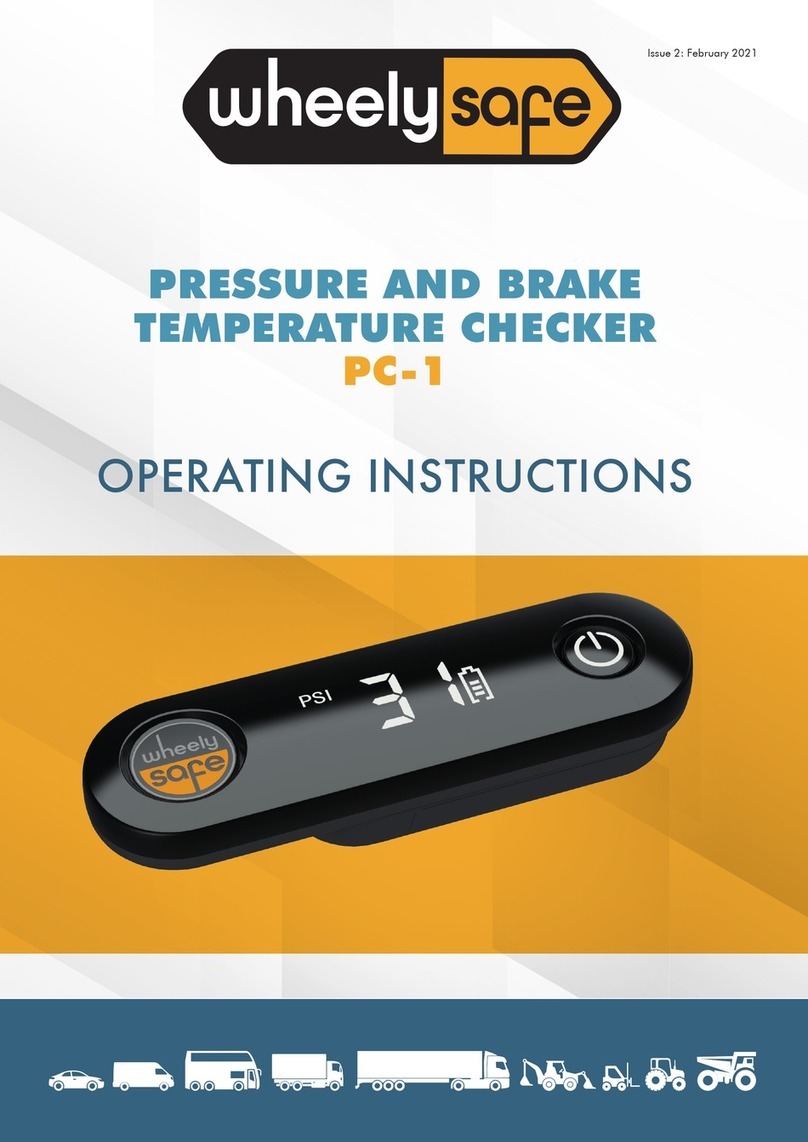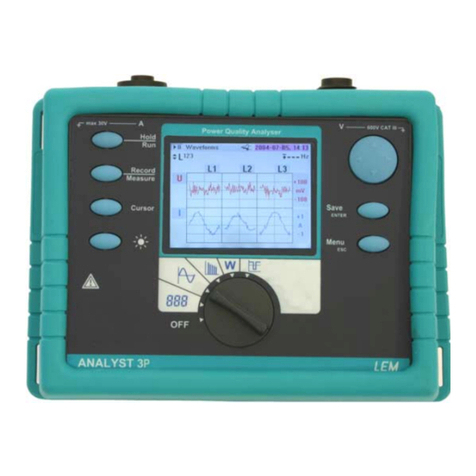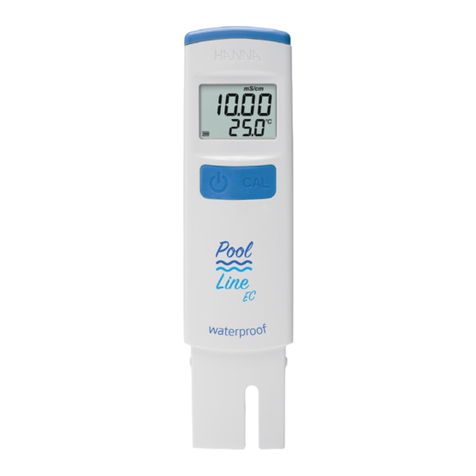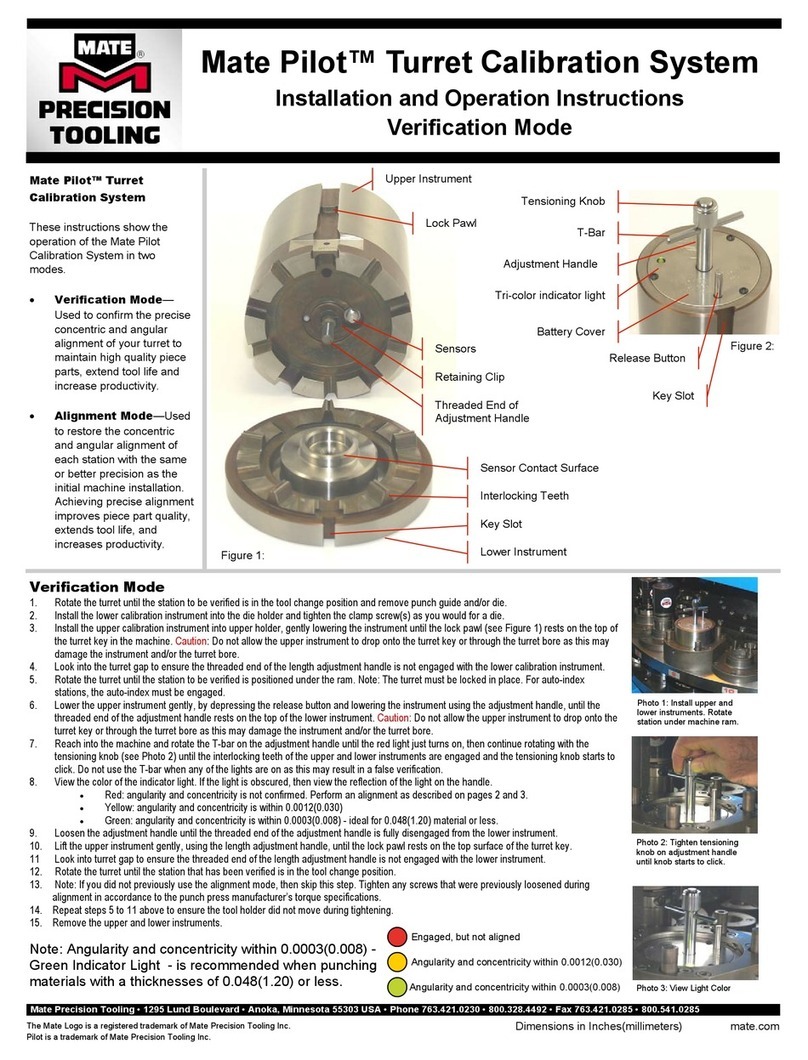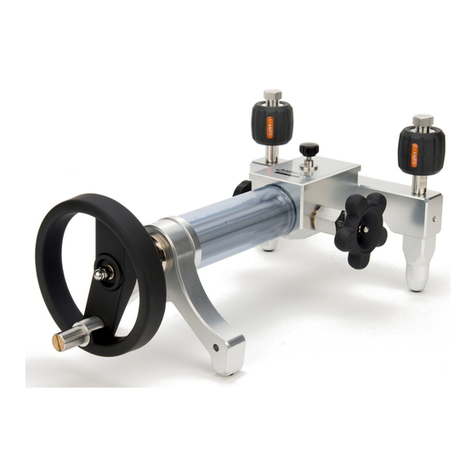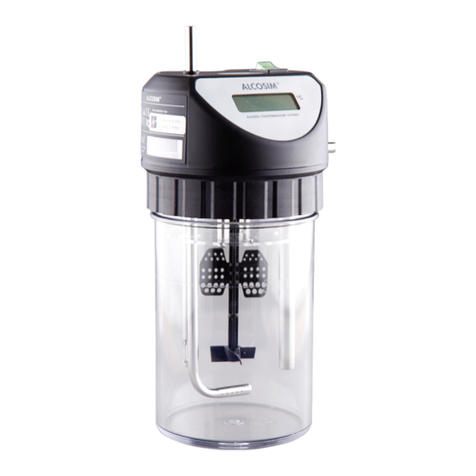
CS 2099 Eurocheck Eurocheck operation
20
4.12Voltage and frequencycalibration
Eurocheck offers a.c. voltage source of 50 V (at 240 V mains voltage). This source can
be used for voltage and frequencycalibration. It is possible (and recommended) to
include second value into your calibration procedure – 0 V (short-circuited test leads,
not open). Frequencyis equal to mains and isusuallyveryclose to 50 Hzor 60 Hz.
Most Metrel installation test instrumentsmeasure all three line voltages: UL-N, UL-PE and
UN-PE. Newer models offer special function where all three voltages can be monitored at
the same time. Older models require that separate measurements ofall three voltages
are performed in different functions (like RLINE – UL-N, RLOOP – UL-PE and RN-PE – UN-PE).
In some models it is possible to use phase rotation function to measure all voltages at
the same time. Refer to the User manual of your instrument for more information.
However, onlyone voltage can be calibrated at a time, since Eurocheck offers only2-
lead connection. Leave the unused lead disconnected.
Voltage and frequencymeasurement calibration can be performed with universal test
cable or tip commander. Onlyuniversal test cable makes possible calibration ofall 3 line
voltages. Make sure to followconnection instructions for the tested instrument. Generic
connection diagram is shown in Figure 4.5.
Step Action
1 q Connect tested instrument into Eurocheckvoltage test sockets using
universal test cable, followconnection diagram shown in Figure 4.5; start
with L and N leads (UL-N calibration).
2 q Switch on the tested instrument and select appropriate voltage
measurement function.
q Start voltage measurement manuallyifnecessary.
3 q Connect Eurocheck into mains wall socket and enable itsoutput.
q Observe anywarnings displayed on the tested instrument and
Eurocheck.
q If Eurocheck signals incorrect L and N polarity, reverse connection.
4 q Perform voltage and frequencymeasurement with the tested instrument.
q Write down measurement result for documentation purposes.
5 q If measured voltage or frequencydeviates significantlyfrom reference
values, it is verylikelythe tested instrument isdamaged. Send it to your
distributor or manufacturer for repair and/or readjustment.
6 q Connect another pair ofmeasurement leads to voltage source (L and
PE, N and PE) and repeat steps 4 -5.
Notes:
q Stabilityofreference voltage depends on mains voltage fluctuations. Use stabile
reference a.c. source with 240 V output if better accuracyis necessary.
Alternativelymeasure reference voltage with universal DMM simultaneously
(accuracyclass 1 % orbetter).
q Calibration value represents safe a.c. voltage limit as defined in European LVD
directive and is often used asa safe contact voltage limit when testing RCDs.
q When calibrating 3-voltage measurement system unused voltmeters mayshow
irregular results (this is hardware dependent and presents no problem).
q When using 230 V source the reference voltage is 47.9 V.





















